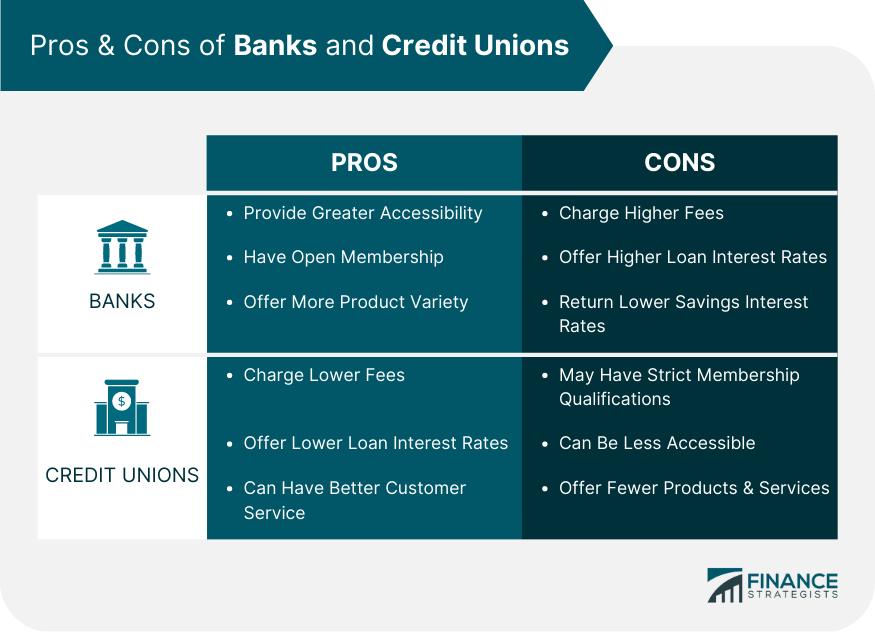Credit Union in Wyoming: Discover the Conveniences of Member-Focused Banking
Credit Union in Wyoming: Discover the Conveniences of Member-Focused Banking
Blog Article
The Ultimate Overview to Recognizing Lending Institution
Credit score unions stand as distinct monetary entities, rooted in principles of mutual support and member-driven procedures. As we navigate via the intricacies of credit scores unions, an informative journey awaits to lose light on these member-focused establishments and just how they differ from traditional banks.
What Are Lending Institution?
Lending institution are member-owned economic institutions that offer an array of financial services to their participants. Unlike conventional financial institutions, lending institution run as not-for-profit organizations, indicating their primary emphasis is on offering their members instead than maximizing earnings. Participants of a lending institution commonly share an usual bond, such as helping the very same company, belonging to the very same community, or belonging to the same organization.
Among the crucial advantages of cooperative credit union is that they often offer higher interest prices on interest-bearing accounts and lower rate of interest on financings compared to banks. This is since lending institution are structured to benefit their participants straight, permitting them to pass on their revenues in the type of better prices and fewer costs. In addition, lending institution are recognized for their customized customer support, as they focus on building partnerships with their participants to comprehend their distinct financial needs and goals.
History and Evolution of Lending Institution

The roots of member-owned economic cooperatives, recognized today as credit scores unions, trace back to a time when communities looked for choices to standard banking establishments. The concept of lending institution come from the 19th century in Europe, with Friedrich Wilhelm Raiffeisen typically credited as the pioneer of the participating financial movement (Cheyenne Federal Credit Union). Raiffeisen established the very first recognized cooperative credit union in Germany in the mid-1800s, emphasizing area support and self-help principles
The evolution of lending institution proceeded in The United States and copyright, where Alphonse Desjardins established the first lending institution in copyright in 1900. Soon after, in 1909, the initial united state lending institution was formed in New Hampshire by a group of Franco-American immigrants. These early lending institution run on the fundamental concepts of shared aid, autonomous control, and participant possession.
Gradually, credit rating unions have grown in popularity worldwide because of their not-for-profit structure, concentrate on serving participants, and supplying affordable monetary product or services. Today, credit scores unions play a vital function in the financial sector, offering community-oriented and easily accessible financial choices for businesses and individuals alike.
Subscription and Eligibility Requirements
Membership at a lending institution is usually limited to individuals meeting specific qualification standards based upon the establishment's starting concepts and regulative requirements. These requirements frequently consist of aspects such as geographic area, work standing, Credit Union in Wyoming subscription in specific companies, or affiliation with details groups (Cheyenne Federal Credit Union). Cooperative credit union are understood for their community-oriented method, which is mirrored in their subscription needs. Some credit unions might just offer people who live or work in a specific location, while others may be tailored to workers of a certain business or participants of a specific organization.
Furthermore, credit rating unions are structured as not-for-profit companies, meaning that their main goal is to serve their members as opposed to produce earnings for investors. This focus on participant service commonly converts into even more customized focus, reduced fees, and competitive rate of interest on fundings and financial savings accounts. By fulfilling the eligibility standards and coming to be a member of a lending institution, people can access a range of economic services and products tailored to their particular needs.
Solutions and Products Used
One of the key elements that establishes credit unions apart is the diverse variety of financial solutions and items they offer to their participants. Credit unions usually give standard banking solutions such as financial savings and examining accounts, fundings, and credit score cards.
In addition, cooperative credit union frequently provide practical online and mobile financial alternatives for participants to easily handle their finances. They might offer rewards such as shared branching, allowing participants to access their accounts at other lending institution across the nation. Some cooperative credit union likewise offer insurance policy products like life, car, and home insurance coverage to aid members safeguard their assets and loved ones.
Along with financial solutions, cooperative credit union frequently take part in community outreach programs and financial education and learning campaigns to support their participants in attaining their financial goals.
Benefits of Financial With Lending Institution
When considering economic organizations, checking out the benefits of financial with credit scores unions reveals unique advantages for members seeking customized service and affordable rates. Unlike big banks, credit score unions are member-owned and prioritize building solid relationships with their members. Overall, financial with a credit history union can give an extra customized, affordable, and member-centric economic experience.
Final Thought

Credit unions are member-owned monetary institutions that supply an array of financial services to their participants. The concept of credit score unions stem in the 19th century in Europe, with Friedrich Wilhelm Raiffeisen often attributed as the pioneer of the participating banking movement.The advancement of credit rating unions continued in North America, where Alphonse Desjardins developed the initial credit rating union in copyright in 1900. Credit unions usually offer typical banking solutions such as cost savings and inspecting accounts, loans, and debt cards.When thinking about financial establishments, checking out the benefits of financial with credit history unions reveals distinct advantages for participants looking for tailored service and affordable prices.
Report this page